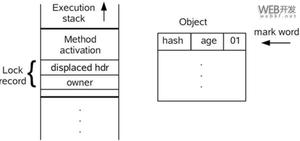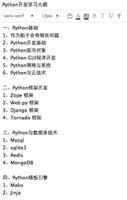Python学习-day9 线程

这节内容主要是关于线程的学习
首先要了解的什么是进程,什么是线程
什么是进程(process)?
程序并不能单独运行,只有将程序装载到内存中,系统为它分配资源才能运行,而这种执行的程序就称之为进程。程序和进程的区别就在于:程序是指令的集合,它是进程运行的静态描述文本;进程是程序的一次执行活动,属于动态概念。
在多道编程中,我们允许多个程序同时加载到内存中,在操作系统的调度下,可以实现并发地执行。这是这样的设计,大大提高了CPU的利用率。进程的出现让每个用户感觉到自己独享CPU,因此,进程就是为了在CPU上实现多道编程而提出的。
有了进程为什么还要线程?
进程有很多优点,它提供了多道编程,让我们感觉我们每个人都拥有自己的CPU和其他资源,可以提高计算机的利用率。很多人就不理解了,既然进程这么优秀,为什么还要线程呢?其实,仔细观察就会发现进程还是有很多缺陷的,主要体现在两点上:
进程只能在一个时间干一件事,如果想同时干两件事或多件事,进程就无能为力了。
进程在执行的过程中如果阻塞,例如等待输入,整个进程就会挂起,即使进程中有些工作不依赖于输入的数据,也将无法执行。
例如,我们在使用qq聊天, qq做为一个独立进程如果同一时间只能干一件事,那他如何实现在同一时刻 即能监听键盘输入、又能监听其它人给你发的消息、同时还能把别人发的消息显示在屏幕上呢?你会说,操作系统不是有分时么?但我的亲,分时是指在不同进程间的分时呀, 即操作系统处理一会你的qq任务,又切换到word文档任务上了,每个cpu时间片分给你的qq程序时,你的qq还是只能同时干一件事呀。
再直白一点, 一个操作系统就像是一个工厂,工厂里面有很多个生产车间,不同的车间生产不同的产品,每个车间就相当于一个进程,且你的工厂又穷,供电不足,同一时间只能给一个车间供电,为了能让所有车间都能同时生产,你的工厂的电工只能给不同的车间分时供电,但是轮到你的qq车间时,发现只有一个干活的工人,结果生产效率极低,为了解决这个问题,应该怎么办呢?。。。。没错,你肯定想到了,就是多加几个工人,让几个人工人并行工作,这每个工人,就是线程!
什么是线程(thread)?
线程是操作系统能够进行运算调度的最小单位。它被包含在进程之中,是进程中的实际运作单位。一条线程指的是进程中一个单一顺序的控制流,一个进程中可以并发多个线程,每条线程并行执行不同的任务
进程与线程的区别?
- Threads share the address space of the process that created it; processes have their own address space.
- Threads have direct access to the data segment of its process; processes have their own copy of the data segment of the parent process.
- Threads can directly communicate with other threads of its process; processes must use interprocess communication to communicate with sibling processes.
- New threads are easily created; new processes require duplication of the parent process.
- Threads can exercise considerable control over threads of the same process; processes can only exercise control over child processes.
- Changes to the main thread (cancellation, priority change, etc.) may affect the behavior of the other threads of the process; changes to the parent process does not affect child processes.
Python GIL(Global Interpreter Lock)
无论你启多少个线程,你有多少个cpu, Python在执行的时候会淡定的在同一时刻只允许一个线程运行。
首先需要明确的一点是GIL并不是Python的特性,它是在实现Python解析器(CPython)时所引入的一个概念。就好比C++是一套语言(语法)标准,但是可以用不同的编译器来编译成可执行代码。有名的编译器例如GCC,INTEL C++,Visual C++等。Python也一样,同样一段代码可以通过CPython,PyPy,Psyco等不同的Python执行环境来执行。像其中的JPython就没有GIL。然而因为CPython是大部分环境下默认的Python执行环境。所以在很多人的概念里CPython就是Python,也就想当然的把GIL归结为Python语言的缺陷。所以这里要先明确一点:GIL并不是Python的特性,Python完全可以不依赖于GIL
这篇文章透彻的剖析了GIL对python多线程的影响,强烈推荐看一下:http://www.dabeaz.com/python/UnderstandingGIL.pdf
Python threading模块
#Author:Ivorimport threading
import time
def run(n):
print("task---start,",n)
time.sleep(1)
print("task---end",n,threading.current_thread())
res_list = []
start_time = time.time()
#Starting Multiple threads
for i in range(50):
t = threading.Thread(target=run,args=("t %s" % i,))
#set child threads to daemon threads
t.setDaemon(True)
t.start()
res_list.append(t)
#Main Thread waiting for the child threads
for r in res_list:
r.join()
print("current thread",threading.current_thread())
print("Running time = ",time.time() - start_time)
import threading
class MyThread(threading.Thread):
def __init__(self, num):
threading.Thread.__init__(self)
self.num = num
def run(self): # 定义每个线程要运行的函数
print("running on number:%s" % self.num)
time.sleep(3)
if __name__ == '__main__':
t1 = MyThread(1)
t2 = MyThread(2)
t1.start()
t2.start()
View Code
线程锁(互斥锁Mutex)
#Authon Ivorimport time
import threading
def addNum():
global num # 在每个线程中都获取这个全局变量
lock.acquire()
num -= 1 # 对此公共变量进行-1操作
lock.release()
num = 100 # 设定一个共享变量
thread_list = []
lock = threading.Lock()
for i in range(100):
t = threading.Thread(target=addNum)
t.start()
thread_list.append(t)
for t in thread_list: # 等待所有线程执行完毕
t.join()
print('final num:', num)
View Code
RLock(递归锁)
#Authon Ivorimport threading, time
def run1():
print("grab the first part data")
lock.acquire()
global num
num += 1
lock.release()
return num
def run2():
print("grab the second part data")
lock.acquire()
global num2
num2 += 1
lock.release()
return num2
def run3():
lock.acquire()
res = run1()
print('--------between run1 and run2-----')
res2 = run2()
lock.release()
print(res, res2)
num, num2 = 0, 0
lock = threading.RLock() #must be use RLock
# lock = threading.Lock()
for i in range(10):
t = threading.Thread(target=run3)
t.start()
while threading.active_count() != 1:
print(threading.active_count())
else:
print('----all threads done---')
print(num, num2)
View Code
Semaphore(信号量)
#Authon Ivorimport threading
import time
def run(n):
semaphore.acquire()
print(n)
time.sleep(1)
semaphore.release()
neq = threading.Semaphore(5)
semaphore = threading.BoundedSemaphore(5)
for i in range(10):
t = threading.Thread(target=run,args=(i,))
t.start()
View Code
Events
#Authon Ivorimport threading
import time
def light():
count = 0
#initialize signal
cond.set()
while True:
if count > 5 and count < 10:
#clear signal
cond.clear()
print("\033[41;1mRed light\033[;0m")
elif count > 10:
#set signal
cond.set()
count = 0
else:
print("\033[42;1mGreen light\033[;0m")
count += 1
time.sleep(1)
def car():
while True:
time.sleep(1)
if cond.is_set():
print("Car gogo...")
else:
print("Car stop...")
#hang on the thread
cond.wait()
cond = threading.Event()
l = threading.Thread(target=light)
c = threading.Thread(target=car)
l.start()
c.start()
View Code
不得不提的消息队列
Queue
#Authon Ivorimport threading
import queue
def producer():
for i in range(10):
q.put("骨头 %s" % i)
print("开始等待所有的骨头被取走...")
q.join()
print("所有的骨头被取完了...")
def consumer(n):
while q.qsize() > 0:
print("%s 取到" % n, q.get())
q.task_done() # 告知这个任务执行完了
q = queue.Queue()
p = threading.Thread(target=producer)
p.start()
c1 = consumer("李闯")
import time,random
import queue,threading
def Producer(name):
count = 0
while count <20:
time.sleep(random.randrange(3))
q.put(count)
print('Producer %s has produced %s baozi..' %(name, count))
count +=1
def Consumer(name):
count = 0
while count <20:
time.sleep(random.randrange(4))
if not q.empty():
data = q.get()
print(data)
print('\033[32;1mConsumer %s has eat %s baozi...\033[0m' %(name, data))
else:
print("-----no baozi anymore----")
count +=1
q = queue.Queue()
p1 = threading.Thread(target=Producer, args=('A',))
c1 = threading.Thread(target=Consumer, args=('B',))
p1.start()
c1.start()
View Code
还有一个实现自动化运维的模块
Pamamiko
SFTP
#Authon Ivorimport paramiko
#创建一个连接
conn = paramiko.Transport(('10.0.2.57',22))
conn.connect(username='root',password='test83@123')
#通过连接实例,创建一个FTPClient实例
sftp = paramiko.SFTPClient.from_transport(conn)
#上传动作
# sftp.put('D:\\test.xls','/tmp/test.xls')
#下载动作
# sftp.get('/tmp/test.xls','D:\\test.xls')
conn.close()
#Author:Ivor
import paramiko
private_key = paramiko.RSAKey.from_private_key_file('/home/auto/.ssh/id_rsa')
transport = paramiko.Transport(('hostname', 22))
transport.connect(username='wupeiqi', pkey=private_key)
sftp = paramiko.SFTPClient.from_transport(transport)
sftp.put('/tmp/location.py', '/tmp/test.py')
sftp.get('remove_path', 'local_path')
transport.close()
View Code
SSH
#Authon Ivorimport paramiko
#创建SSH实例
ssh = paramiko.SSHClient()
#设置不在known_host的主机
ssh.set_missing_host_key_policy(paramiko.AutoAddPolicy())
#建立连接
ssh.connect(hostname="10.0.2.57",port=22,username="root:",password="test83@123")
#执行命令,返回标准输入输出错误
stdin, stdout, stderr = ssh.exec_command("df")
#读取结果
result = stdout.read()
print(result.decode())
#关闭连接
ssh.close()
#Author:Ivor
#######
#funtion 1
#######
import paramiko
private_key = paramiko.RSAKey.from_private_key_file('id_rsa')
ssh = paramiko.SSHClient()
ssh.set_missing_host_key_policy(paramiko.AutoAddPolicy())
ssh.connect(hostname='59.110.23.110', port=22, username='root', pkey=private_key)
stdin, stdout, stderr = ssh.exec_command('df')
result = stdout.read()
print(result.decode())
ssh.close()
########
#funtion 2
########
import paramiko
from io import StringIO
key = '''XXX
-----END RSA PRIVATE KEY-----'''
private_key = paramiko.RSAKey(file_obj=StringIO(key))
transport = paramiko.Transport((XXXX, 22))
transport.connect(username='root', pkey=private_key)
ssh = paramiko.SSHClient()
ssh._transport = transport
stdin, stdout, stderr = ssh.exec_command('df')
result = stdout.read()
transport.close()
print(result)
View Code
以上是 Python学习-day9 线程 的全部内容, 来源链接: utcz.com/z/387846.html








